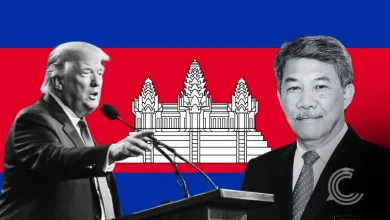A City, a President, and a Showdown: Mamdani Pushes Back Against Trump’s Threats

Key Highlights
- NYC receives $7.4B in federal funding for FY2026, per the New York State Comptroller.
- Mamdani declares himself ‘Trump’s biggest nightmare,’ setting up a direct ideological clash.
- Trump fires back, suggesting NYC’s new leadership must ‘be respectful’ to succeed.
New York City’s newly elected leadership is entering office with a confrontational posture toward President-elect Donald Trump, setting the stage for one of the most politically charged city–federal relationships in years.
According to a New York State Comptroller report cited by Reuters, the federal government will provide $7.4 billion to NYC in fiscal year 2026, making up about 6.4% of total municipal spending. The figure is substantial, but the politics surrounding it may matter even more.
Tensions erupted immediately after the election, as Trump and the city’s incoming mayor publicly clashed over ideology, tone, and the question of how much influence Washington can exert over the nation’s largest city.
A Progressive Mayor Who Calls Himself “Trump’s Biggest Nightmare”
In his victory speech, the city’s new mayor, Mamdani, delivered a defiant message that framed New York as the centre of organised resistance to Trump. As reported by several news agencies, Mamdani told cheering supporters: “If anyone can show a nation betrayed by Donald Trump how to defeat him, it is the city that gave rise to him.”
He positioned himself directly opposite the president-elect, presenting New York not merely as a political opponent, but as the symbolic counterweight to Trumpism. Advisers close to his campaign say Mamdani sees himself as “Trump’s biggest nightmare,” a young, progressive, immigrant-rooted leader challenging Trump’s legacy from the very city that once amplified it.
It marked one of the strongest opening salvos any incoming NYC mayor has ever fired at a president.
Trump Responds: “He Has to Be Respectful”
Trump fired back rapidly in comments to Fox News, making clear that Mamdani’s rhetoric struck a nerve. “He has to be a little bit respectful of Washington, because if he is not, he doesn’t have a chance of succeeding,” Trump replied. “I don’t want to make him succeed. I want to make the city succeed,” he added.
Trump’s phrasing was widely interpreted as a warning shot, a message that he is prepared to distinguish between the city and its leadership, and is willing to apply political pressure.
The comments reveal that Trump does not see Mamdani as just another mayor, but as a personal and ideological antagonist capable of undermining his national narrative.
A Tale of Two Competing Visions
Political analysts say the conflict reflects two radically different models of leadership:
- Trump’s model: centralised authority, hierarchy, and loyalty to Washington.
- Mamdani’s model: decentralised mobilisation, progressive activism, and using cities as engines of resistance.
By casting New York as the headquarters of anti-Trump sentiment, Mamdani is signaling he intends to turn the city into a national platform, just as Trump seeks to reclaim dominance over the city that shaped him.
This ideological duel makes New York one of the early battlegrounds of Trump’s next term.
The Fiscal Standoff: Threats vs. Actual Federal Authority
The $7.4 billion in federal funding expected in FY2026 covers critical programs such as housing, Medicaid, education, and social services. Although it remains unclear what legal authority Trump could invoke to reduce or withdraw funds, as many are protected through Congressional appropriations and federal statutes.
Since past attempts to punish cities politically, including Trump’s 2017 effort targeting “sanctuary cities,” were struck down by federal courts.
Trump may influence bureaucratic pacing, public messaging, and agency-level cooperation, but cannot easily sever the city’s lifeline of federal dollars.
What This Standoff Means Going Forward
Experts say the coming months may determine whether the Trump–Mamdani relationship becomes adversarial or outright combative. Areas such as migration management, policing grants, infrastructure, and climate funding could become friction points.
For now, both sides have chosen escalation. Trump wants to assert authority over the city he once dominated. Mamdani wants to turn New York into the epicentre of opposition.
What happens next could shape not just NYC’s governance but could change the face of the national political climate.



